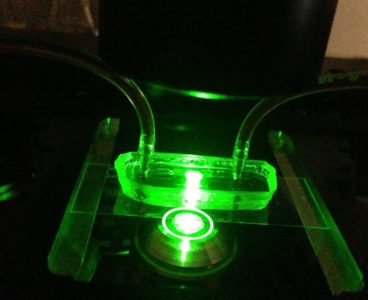Using a familiar tool in a way it was never intended to be used opens up a whole new method to explore materials, report UConn researchers in Proceedings of the National Academies of Science (“Thickness scaling of ferroelectricity in BiFeO3 by tomographic atomic force microscopy”). Their specific findings could someday create much more energy-efficient computer…
‘Smart’ Machine Components Alert Users to Damage and Wear
Scientists at the United Technologies Research Center and UConn used advanced additive manufacturing technology to create ‘smart’ machine components that alert users when they are damaged or worn. The researchers also applied a variation of the technology to create polymer-bonded magnets with intricate geometries and arbitrary shapes, opening up new possibilities for manufacturing and product…
Antibiotic Resistance in a Leech’s Gut
From Cradle to Grave: Model Identifies Factors That Shaped Evolution
Seal Serum Offers Protection From Inflammation
Strain Improves Performance of Atomically Thin Semiconductor Material
Researchers in UConn’s Institute of Materials Science significantly improved the performance of an atomically thin semiconductor material by stretching it, an accomplishment that could prove beneficial to engineers designing the next generation of flexible electronics, nano devices, and optical sensors. In a study appearing in the research journal Nano Letters, University of Connecticut Assistant Professor of Mechanical Engineering…
Spider Silk Key to New Bone-Fixing Composite
University of Connecticut researchers have created a biodegradable composite made of silk fibers that can be used to repair broken load-bearing bones without the complications sometimes presented by other materials. Repairing major load-bearing bones such as those in the leg can be a long and uncomfortable process. To facilitate repair, doctors may install a metal…
New Compound Helps Activate Cancer-Fighting T Cells
When Push Comes to Shove—Size Matters for Particles in Our Bloodstream
Researchers at the University of Connecticut have uncovered new information about how particles behave in our bloodstream, an important advancement that could help pharmaceutical scientists develop more effective cancer drugs. Making sure cancer medications reach the leaky blood vessels surrounding most tumor sites is one of the critical aspects of treatment and drug delivery. While surface chemistry,…







